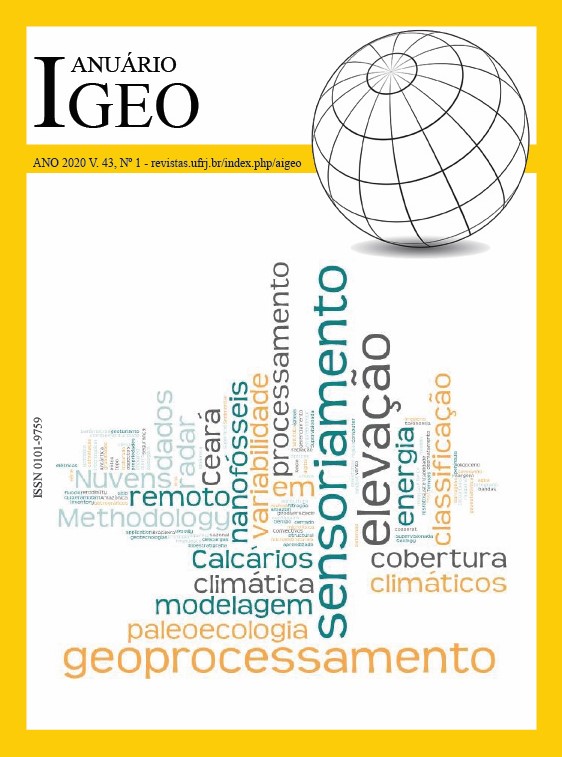Biostratigraphy and Paleoecological Inferences Based on Oligocene Calcareous Nannofossils from the Ceará Rise (ODP Leg 154, Site 929A): Equatorial Atlantic Ocean
DOI:
https://doi.org/10.11137/2020_1_07_17Keywords:
Calcareous Nannofossils, Ceará Rise, OligoceneAbstract
The Ceará Rise is an aseismic feature located in the Equatorial Atlantic Ocean, between the Amazon Cone, Demerara Abyssal Plain and the Ceará Abyssal Plain, which represents a key area for the understanding of deep ocean facies. In the oil and gas field, the identification of calcareous nannofossil-based biozones is important for the age modeling and comprehension of depositional evolution of the sedimentary strata. The study of Oligocene calcareous nannofossil-based succession at the Ceará Rise helped to detect paleoecological trends during the Oligocene. Using a polarized light optical microscope, forty-four species were observed, described and accounted in fifteen samples. The biostratigraphic model includes the standard biozones NP23, NP24 and NP25, as well as the recently proposed biozone NP26 - Clausicoccus fenestratus. Among the species found, Sphenolithus ciperoensis, Sphenolithus distentus and Sphenolithus predistentus were the most important biostratigraphic markers for the section. The quantification of the nannofossils, enabled the division of the studied section into eight distinct intervals according to the fluctuation in paleoproxies values and diversity indices: Interval A (CP17: Rupelian): oligotrophic assemblage of warmer surface waters; Interval B (CP18: Rupelian): temperate assemblage of mesotrophic/eutrophic surface waters; Interval C (CP18 and CP19a: Rupelian/Chattian): oligotrophic assemblage of warmer surface waters; Interval D (CP19a and CP19b: Chattian): temperate assemblage of mesotrophic/eutrophic surface waters; Interval E (CP19b: Chattian): oligotrophic assemblage of warmer surface waters; Interval F (CP19b: Chattian): temperate assemblage of oligotrophic surface waters; Interval G (CP19b: Chattian): temperate assemblage of oligotrophic surface waters; and Interval H (CN1a: Chattian): temperate assemblage of eutrophic surface waters.Downloads
Download data is not yet available.
Downloads
Published
2020-04-23
How to Cite
Fionda, A. C. M. D. (2020) “Biostratigraphy and Paleoecological Inferences Based on Oligocene Calcareous Nannofossils from the Ceará Rise (ODP Leg 154, Site 929A): Equatorial Atlantic Ocean”, Anuário do Instituto de Geociências. Rio de Janeiro, BR, 43(1), pp. 07–17. doi: 10.11137/2020_1_07_17.
Issue
Section
Article
License
This journal is licensed under a Creative Commons — Attribution 4.0 International — CC BY 4.0, which permits use, distribution and reproduction in any medium, provided the original work is properly cited.















